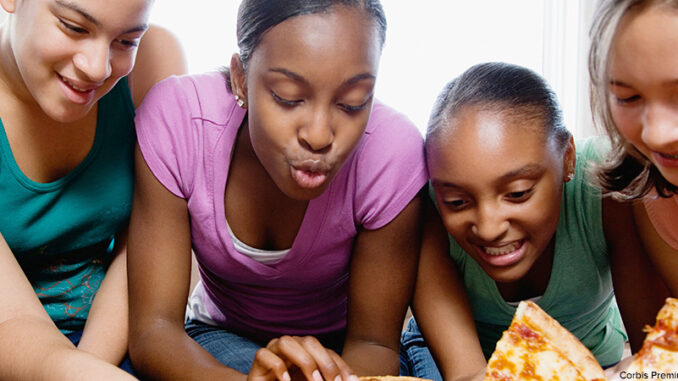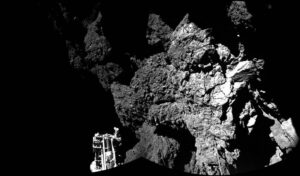
Self-Driving Chairs?
Tired of waiting in long lines at restaurants, concerts, and amusement parks? Thanks to a Japanese car company, you may not have to some time in the future.
Nissan has recently developed the ProPilot, a battery-operated chair that automatically follows another chair in front of it along a set path, maintaining a fixed distance–like a giant conveyor belt. Once a chair reaches the front of the line and its passenger stands, weight sensors automatically guide the chair back to the end of the line.
While Nissan has advertised that the new chair will make waiting in line “easy and fun,” many people have expressed concern about the impact it could have when so many people in the developed world already don’t exercise enough. However, the ProPilot could be very useful in places with aging populations, like Japan; for people with limited mobility; or in cities with huge population densities (such as Tokyo). It is also a way for Nissan to introduce the public to its new self-driving Serena minivans, which operate using similar technology.
What Do You Think? Working with a classmate, come up with a list of at least five places or situations not already mentioned in the article in which a self-driving chair like the ProPilot might be useful. When you’re finished, use the Internet to research how many hours per day most Americans already spend sitting down. Working with your partner, write a short paragraph explaining whether or not you would support this kind of technology in the United States. Make sure to give good reasons to back up your position. If time allows, share your paragraphs with the class.
Crash Landing
On Friday evening, the spacecraft Rosetta ended its historic mission by crash-landing on the surface of the comet it has been investigating for more than two years.

The landing, which occurred around 6:39 a.m. last Friday, was intentional. Scientists decided to end Rosetta’s mission because the comet it had been orbiting, 67P/Churyumov-Gerasimenko, was heading out beyond the orbit of Jupiter. This would take Rosetta further from the Sun than it had ever traveled before. Rosetta would not have had enough power to continue operating. Furthermore, landing Rosetta on the comet allowed the spacecraft to study the comet’s surface at very close range and send back high-resolution images to Earth.
Rosetta was built by the European Space Agency and launched in 2004. Since then, it traveled nearly eight billion miles (including three Earth flybys) as it became the first spacecraft to orbit a comet and performed a detailed study of 67P for over two years, changing the way that scientists think about comets.
Comets are important to study because they are composed of material left over from the origin of the solar system. They have remained completely unchanged since the formation of the universe 4.5 billion years ago. So, scientists use them like time capsules which could potentially answer our questions about the origins of the solar system. Rosetta detected many organic compounds present on 67P, which could indicate that comets were responsible for bringing many of the elements that led to the formation of life on Earth.
The slow-motion landing did not destroy Rosetta. However, its antenna will no longer be angled at Earth, so scientists will not be able to receive its signal. It is possible that it will “hibernate” on the comet for the next half-million years or so. As it landed, Rosetta used its Twitter feed to send out farewell messages to Earth, including the phrase “mission complete” in several languages.
Share What You Know Using Internet resources, research the spacecraft Philae. Why was Philae important? How were Philae’s and Rosetta’s missions and journeys related? Write a short report and present your findings to the class.
Cooking Pizza On the Go
Have you ever tried to order a pizza and been told that it will take an hour to arrive? And then, when it’s finally delivered, it’s cold? A new California company named Zume has figured out how to avoid these typical delivery pitfalls by using robots and algorithms to make sure that every customer receives a hot and delicious pizza, as quickly as possible, every single time.
The process: When you place an order to the Zume factory using the app, a team of mostly robots makes your pizza and loads it partially baked into its own mini-oven. The Zume delivery truck, which looks like a standard FedEx truck, holds 56 of these mini-ovens on racks which are locked into place so that the pizzas can continue to cook while the truck is moving. Four minutes before the truck is scheduled to arrive at your home, the ovens are programmed to automatically finish cooking your pizza. When the pizza is ready, it is deposited into a special pizza pod which is made of a sugar-cane fiber rather than cardboard, which helps keep the crust from getting soggy, and delivers it to your door.
Only one human employee – called a “pie-lot” – is required per truck: to drive, slice the pizzas, and hand them off to customers. And because most of the work is done by robots, there isn’t the usual backlog or delay that consumers have come to expect from other pizza shops during peak hours.
Zume is planning to add three more trucks by the end of the year, expanding their vision of using technology to provide customers with the best possible food experience.
What Do You Think? Would you order a pizza prepared by robots? Why or why not? While it’s true that this model is incredibly efficient, can you think of any drawbacks to this method? How could using robots in the food service industry potentially impact the job market for human employees?
Barbie at the Louvre
Even if you never played with Barbie, chances are you know someone who did. And now, Barbie has her own exhibit at the Museum of Decorative Arts at the Louvre in Paris, France.
The exhibit fills two entire floors of the museum with more than 700 Barbie dolls, from her inception in 1959 to the present day. Barbie was originally created by Ruth Handler, who noticed that girls had only baby dolls to play with. She developed Barbie so that girls could picture themselves as adults, and imagine their own future lives. The original Barbie was white, with blonde hair and a disproportionately slim figure. Today, however, Barbie comes in 14 different skin tones, with 27 different hair colors and several different figures. She has also held countless careers, from a race car driver to president of the United States.
The curator of the exhibit points out that everyone is familiar with Barbie, whether they have played with her or not, and that the many changes the doll has undergone over the years reflect our culture’s changing visions of beauty, femininity, and the roles of women. Because of this, she says, Barbie is a lot more than just a doll; rather, she reflects our entire, changing society.
